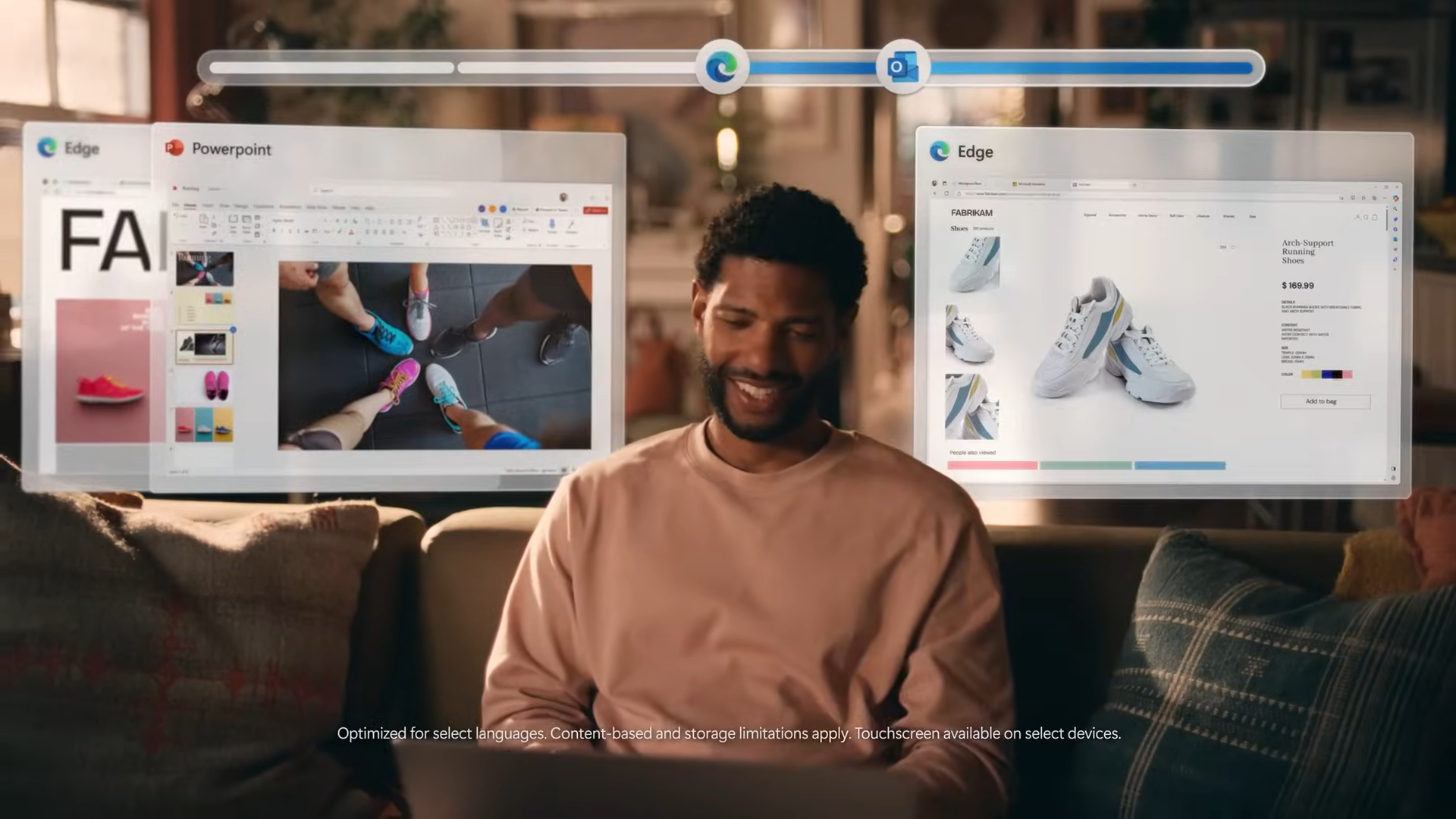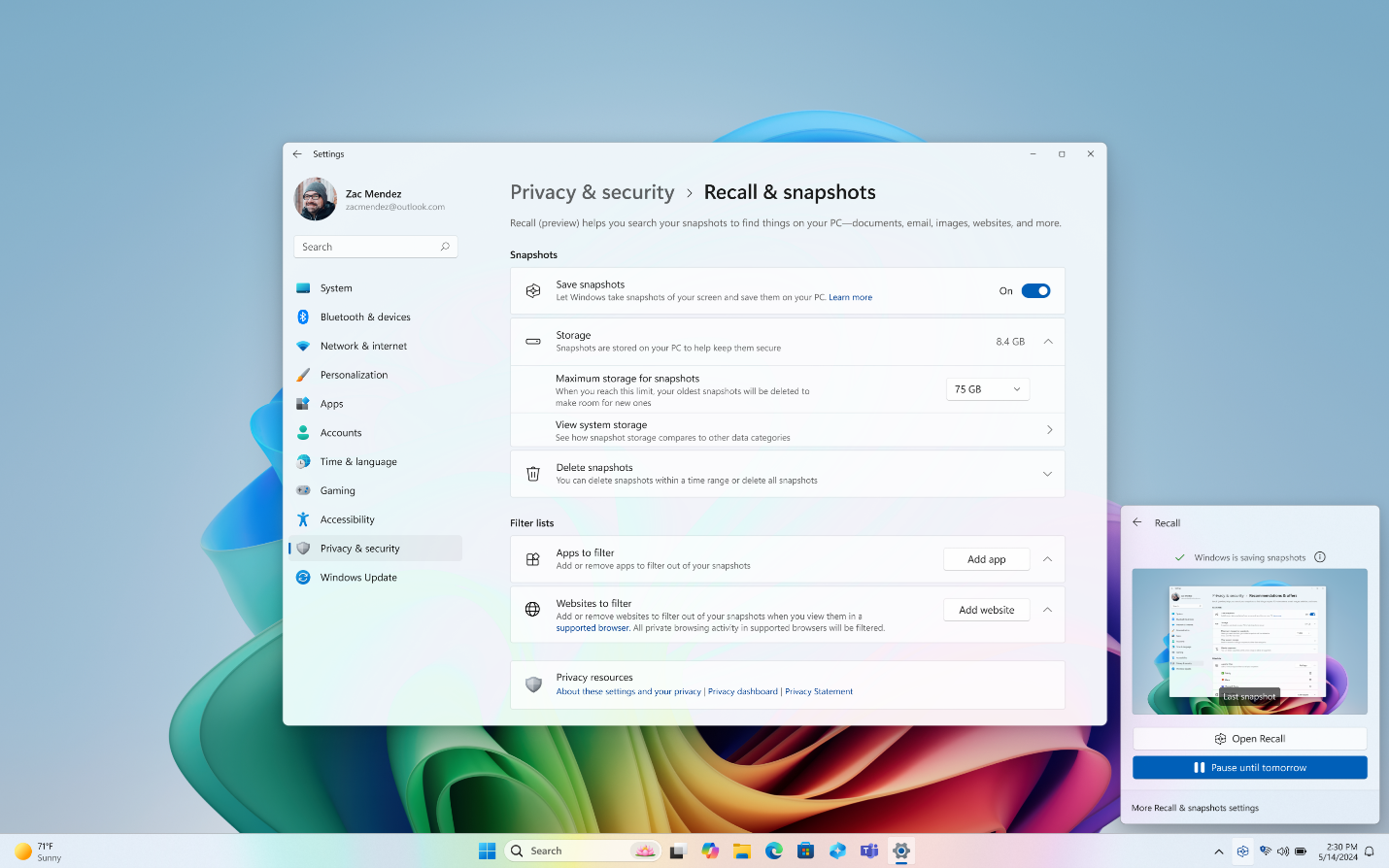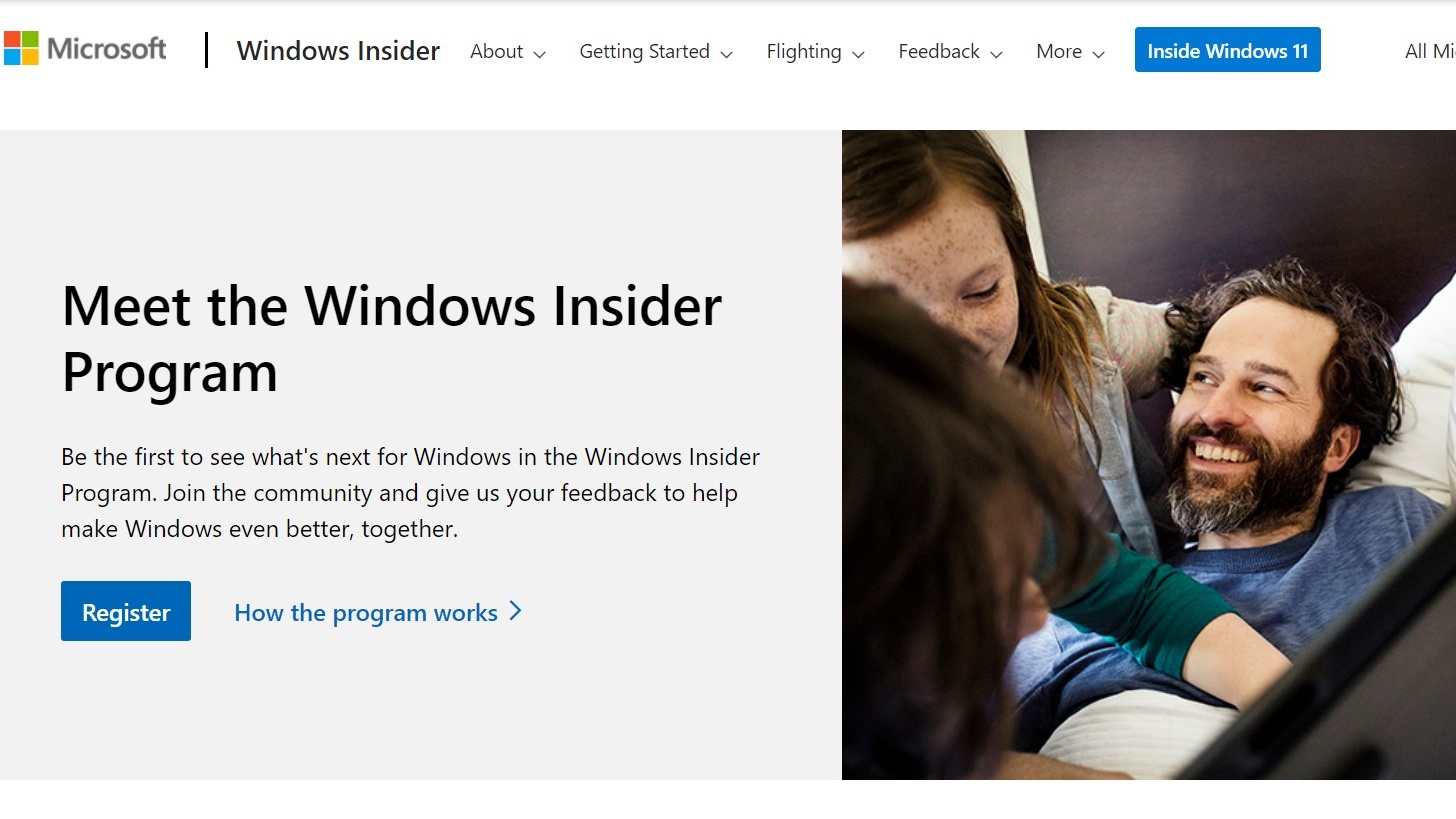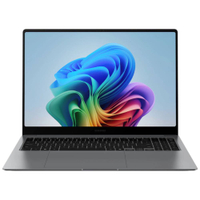Microsoft Recall is gradually rolling out — will new privacy features get you to try Windows AI?
Do you remember Microsoft Recall?

Recall was one of the signature new AI features for Copilot+ PCs announced by Microsoft at its Build event on May 20, 2024. On Thursday, almost a year later, Microsoft started a gradual rollout of Recall to Windows Insiders.
So why the delay? The concept behind Recall sounds excellent; it knows what you've done on your PC, allowing you to pull up anything you've seen with simple semantic searches describing what you remember. Here's how Microsoft describes it: "Unlock your photographic memory with Recall."
That may be the greatest sales pitch for buying one of the best AI laptops that I've heard, but Recall faced immediate backlash over privacy concerns, with Microsoft first changing it to an opt-in feature that you had to activate and then removing it entirely. It became one of the biggest AI controversies of 2024.
See also: Best laptop deals in April 2025
However, Microsoft did not give up on Recall, making small changes and allowing limited sets of Windows users to continue testing it out.
In December 2024, Laptop Mag contributing writer Shubham Agarwal spent weeks using the Microsoft Recall preview, and while he was initially put off by the privacy concerns, he stuck with it and found it "to be a game-changer and a glimpse into the future of desktop productivity."
Microsoft is taking another swing at bringing the feature to market via the Windows Insider program before a presumed eventual rollout to all Windows 11 users. Before that happens, let's take a look at the feature as it exists today — because you might have the chance to opt in to Recal soon.
Stay in the know with Laptop Mag
Get our in-depth reviews, helpful tips, great deals, and the biggest news stories delivered to your inbox.
Key specs: 16-inch WQXGA+ (2880 x 1800) 400-nit AMOLED touchscreen display, Intel Core Ultra 7 Series 2 8-core CPU, 16GB RAM, Intel Arc Graphics, 1TB SSD, Windows 11 Home
Price check: Samsung $1,649
Microsoft Recall in April 2025
Despite the rocky road for Recall, it retains the same promise and feature set we saw in May 2024.
Despite the rocky road for Recall, it retains the same promise and feature set we saw in May 2024. The goal is for you to be able to find anything you've seen or done on your Windows PC using a simple search bar rather than having to dig through multiple apps, files, or your browser history.
The biggest changes are all around the privacy guardrails that are in place.
The first is that the feature remains opt-in, even for those in the Windows Insider preview.
You have to launch Recall and then toggle the option to "Save snapshots" by going into Settings > Privacy & security > Recall & snapshots.
If you have concerns, you can also check this setting and verify that it's in the off position.

Second, you can manually filter apps or websites from inclusion in Recall snapshots by adding them to an exclusion list that is also found in Recall & snapshots settings.
This filtering option is in addition to the auto-filtering of sensitive information, which is designed to exclude passwords, ID numbers, and credit card numbers from snapshots. (However, Tom's Hardware reported late last year that Recall still would screenshot information like credit card and Social Security numbers.)
You also must enroll in Windows Hello Enhanced Sign-in Security with one or more biometric sign-in options to use Recall. And finally, the snapshots are processed on-device without going to the cloud, which is why your laptop must meet the following hardware requirements:
- A Copilot+ PC that meets the Secured-core standard
- 40 TOPs NPU (neural processing unit)
- 16 GB RAM
- 8 logical processors
- 256 GB storage capacity
- To enable Recall, you’ll need at least 50 GB of storage space free
- Saving snapshots automatically pauses once the device has less than 25 GB of storage space
When will Recall be available on your laptop?
For Windows 11 users who aren't part of the Insider program, there's no word from Microsoft regarding a rollout date.
If you are a member of the Windows Insider Program in the U.S., Recall started rolling out on Thursday of this week, so if you don't have it already, it should arrive soon.
For Windows 11 users who aren't part of the Insider program, there's no official statement from Microsoft regarding the rollout yet.
Given the gradual rollout of the feature to Insiders even with Recall still flagged as in "preview," it seems clear that the company isn't going to rush it to a wide release.
If you can't wait, you can register for the Windows Insider Program and join the release preview channel.

What's next for Recall
The biggest question for Microsoft next is whether the influx of new Recall users will create another privacy panic or if Windows Insiders will be wowed by the feature and become evangelists for it.
The truth may be somewhere in between, but if Recall can't convince the Windows Insider audience, it will likely have trouble breaking through to mainstream users.
While the existence of a single "killer app" for AI remains in question, features like Recall certainly have strong potential.
We'll watch with interest to see if Microsoft's slow and steady approach with Recall finally pays off.
More from Laptop Mag
Sean Riley has been covering tech professionally for over a decade now. Most of that time was as a freelancer covering varied topics including phones, wearables, tablets, smart home devices, laptops, AR, VR, mobile payments, fintech, and more. Sean is the resident mobile expert at Laptop Mag, specializing in phones and wearables, you'll find plenty of news, reviews, how-to, and opinion pieces on these subjects from him here. But Laptop Mag has also proven a perfect fit for that broad range of interests with reviews and news on the latest laptops, VR games, and computer accessories along with coverage on everything from NFTs to cybersecurity and more.
You must confirm your public display name before commenting
Please logout and then login again, you will then be prompted to enter your display name.


